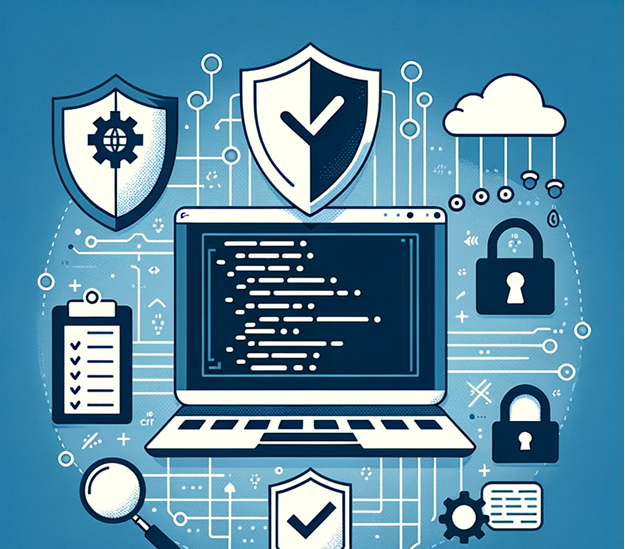Top 5 Techniques for Maintaining High-Quality, Secure Code in Tech Projects

One of the most essential methods for the development of software is known as secure coding. This method involves the practice of writing code in a way that minimizes the occurrence of errors and eliminates the possibility of manipulation. Maintenance of bug-free code, prevention of unauthorized access, theft of data, and system stability are not the only things included.
Skilled IT professionals scrupulous examine code to root out data leaks and enhance performance. With professional IT consulting services, they perform code reviews to improve code quality and its security, ensuring that every penny of your investment benefits your project and prevents inefficiencies and tangled code.
When it comes to the success of any technology product, maintaining excellent and secure code is absolutely necessary. This article will examine five different methods to guarantee the protection and upkeep of high-quality code.
Code Reviews
Conducting regular code reviews is essential to identify and address issues or failures. It includes reviewing code written by skilled developers to ensure that it meets coding standards, follows best practices, and is secure.
It aids in detecting bugs, improves code readability, and increases security. Additionally, the execution is boosting quality assurance measures for the code base. The reviewer can be an extra step in determining logical mistakes and other concerns.
A robust code review process is critical to ensure continuous improvement and prevent unstable code. Code review should be part of a software development team’s process to improve code quality and ensure that experts have reviewed every piece of code.
Automated Testing
Automating tests is an excellent way to ensure that changes to the code do not result in any new vulnerabilities or bugs. During the development procedure, the process helps identify potential problems that may arise in the future. It ensures that any changes to the code will not disrupt the performance that is already in place. The test coverage, application quality, and stability are all improved through automation testing.
The approach covers the following:
Unit tests: Testing the smallest piece of code.
Integration Tests: These involve the testing of code components.
Application Programming Interface/security tests: These are end-to-end tests in which various APIs are automated and tested for security, performance, and functionality.
User Interface Test: Automated UI testing includes visual, performance, and functionality checks.
Safe Coding Procedures
The risks are reduced to a minimal level by employing the secure coding strategy. Output encoding, input approval, appropriate error handling, and the utilization of specific frameworks and libraries are all tasks that the code producers perform.
Some methods are more secure than others, and safe coding standards motivate developers to implement reliable techniques. Here are the best fast coding approaches:
- Designing for Security
- Managing Passwords
- Control of Access
- Managing and Recording Errors
- Configuration of the System
- Using Threat Models
- Practices in Cryptography
- Validation of Input and Encoding of Output
Secure coding is founded on coding standards, which include implementing strategies and decision-making processes during software development to minimize potential security risks.
Patching and Updating Regularly
Keep your software and reliances up to date by installing updates and patches regularly. The strategy comprises upgrading frameworks, programming languages, archives, and operating systems. It aids in resolving security breaches and ensures your code is for the most recent security innovations.
You can protect your software from cyberattacks by performing patch management and regular updates. Through this approach, the enterprises are protected, and it becomes more difficult for hackers to gain access to data and assets belonging to the company. In addition, it encourages developers to use the most recent versions and features that protect data from being exploited and cyberattacks.
Security Testing
It is an essential component of software development that focuses on discovering and correcting security vulnerabilities to protect against malicious threats, illegal access, and data theft.
The procedure comprises vulnerability testing, penetration testing, and code analysis to identify potential flaws before exploiting them.
Here are the main reasons why security testing is essential:
- It helps to protect the confidentiality of data and sensitive information, preventing illegal access and theft.
- It prevents security breaches.
- Maintain customer and user trust by demonstrating that the system is safe and secure.
- Helps to ensure regulatory compliance.
- Identify and address security flaws that cause system failure and improve system stability.
- It increases corporate productivity and efficiency.
Securing the code is through exhaustive procedures of testing vulnerabilities and ongoing testing to assure data safety.
Conclusion
Keeping high-quality and secure code in technology projects requires security testing, satisfying compliance standards, automating testing, regular patching and upgrading, code review, and safe coding methods.
Developers maintain secure code by implementing the latest security innovations and installing robust security tools to minimize data breaches.
Maintaining high-quality and safe code is an ongoing effort that necessitates a combination of best practices, continual learning, and staying current with the latest security developments.

